Tillandsia Dennis
Click thumbnails for full size, scaled to a new window.
Tillandsia Dennis
On Tropiflora List in late 1980's as carminea but does not agree with formal description. Named to differentiate from the true species and as a reminder of the distributor. See Dereks notes on BCR at http://botu07.bio.uu.nl/bcg/bcr/index.php
Named by Derek Butcher 1999. Often called T. carminea 'Dennis'

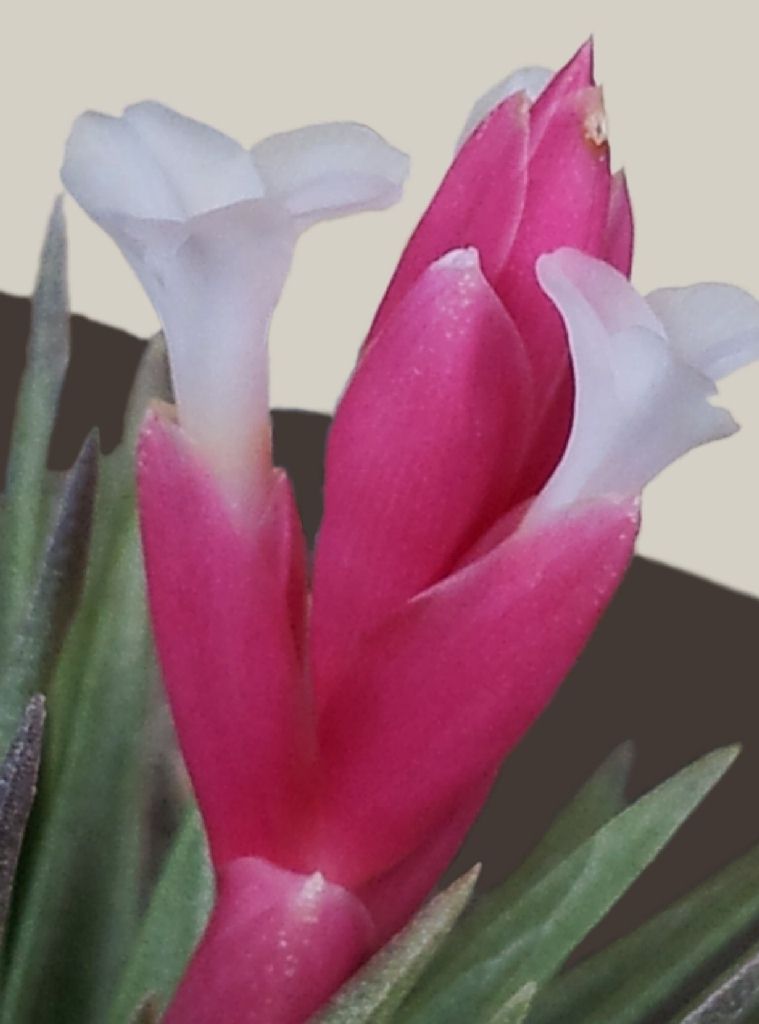
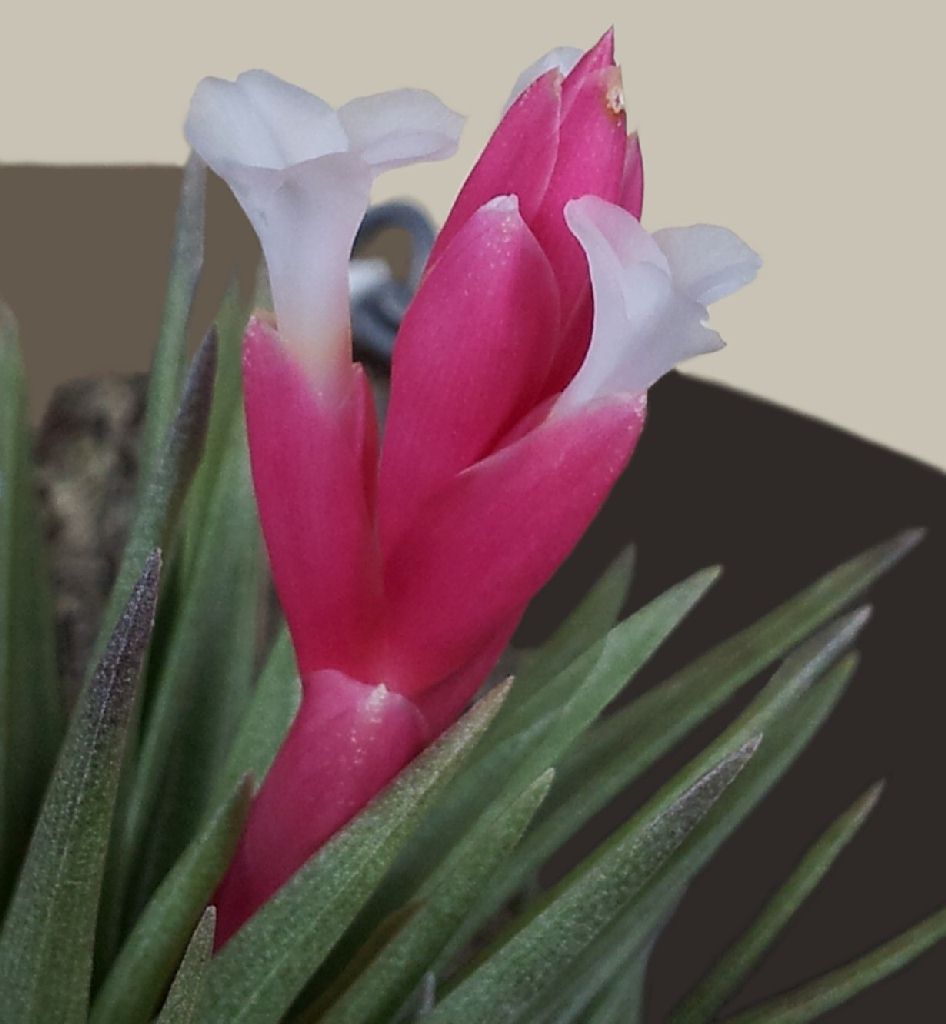
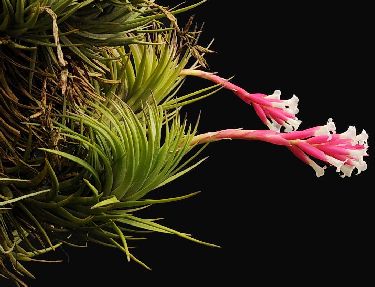
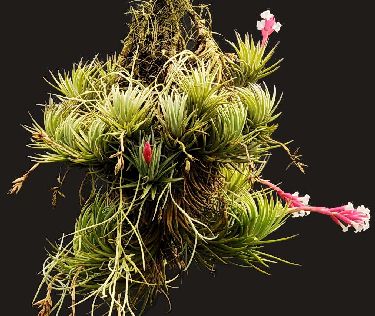 - - -
- - - 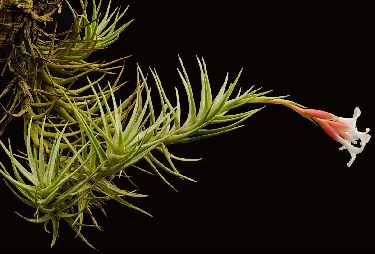

| Peter Tristram 04/12. Open form. |
Peter Tristram 04/12. Two forms. |
Peter Tristram 04/12. T. cocoensis and araujei for comparison. |
Peter Tristram ... ""I have had plants from Tropiflora, labelled as carminea, for a long time and soon realised they were araujei/tenuifolia but with foliage more superficially like carminea. Derek calls these carminea 'Dennis'. There are also plants that vegetatively look like carminea but have mauve bracts and blue flowers that Walter says ‘stricta’ to – got to have carmine bracts to be carminea! The plants in my pic have white, flared flowers like araujei though the very compact one is just budding like Mark Supple's."
I have added a pic of the lovely T. cocoensis and a nice form of araujei for comparison."
Derek Butcher ..... "Tillandsia carminea ‘Dennis’
This is a plant that was imported from Dennis Cathcart at Tropiflora in the USA by Keith Golinski at Bromagic in Queensland about 1990 as Tillandsia carminea. I eventually acquired an offset from Ken Woods of Sydney because he said that it had white flowers and I did not believe him! My offset flowered white too although when in bud it was a very pale blue. I took a flower to pieces and measured all the plant’s vital statistics. I even went to the trouble to translate Walter Till’s description of T. carminea in Pl. Syst. Evol. 138, 293 - 295 (1981) and compared my findings with his.
Our plant only differed in a few aspects but they seemed significant enough for me to believe that it was not according to type. The problem here was that I had no collection data even from Dennis Cathcart but the information I got did suggest it was a species and had been collected in the wild.
Our leaves were strongly carinate under the blade, the posterior sepals at 13mm long were connate for 9 mm not 2mm, and the petals were virtually white, not dark blue. I also found the filaments were plicate but this information was not in the original description.
The plant’s growth habit suggests epilithic (on rocks) and could easily have come from the Organ Mountains (The home of T. carminea) and thus been misidentified. It may even be found again in the wild with correct collection data so that a decision can be made as to its relationship or non-relationship with T. carminea. I have therefore decided to call our plant T. carminea ‘Dennis’ for the meantime to at least identify it.
The high connate posterior sepals suggest a greater link to the T. tenuifolia complex."
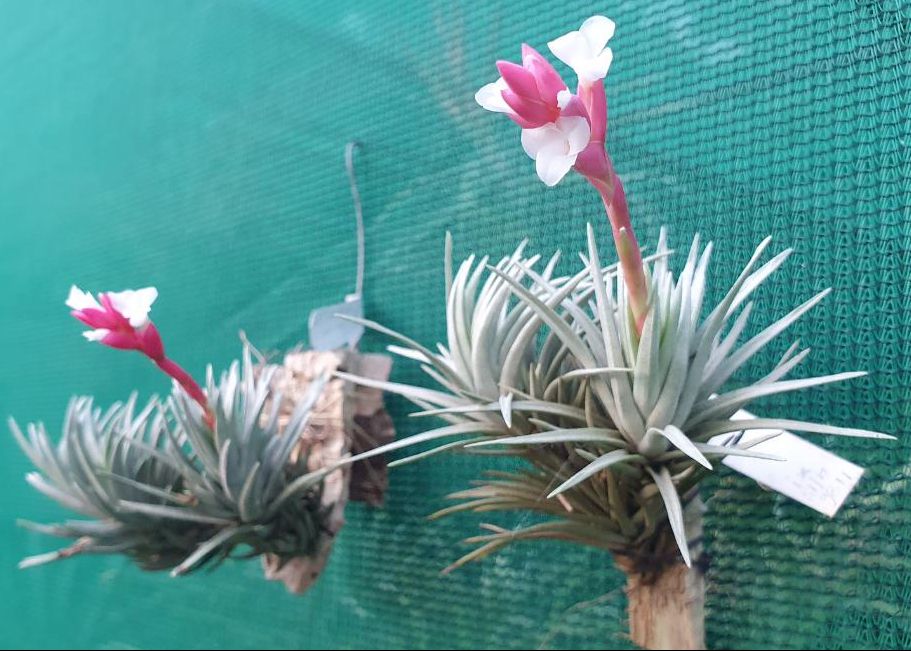
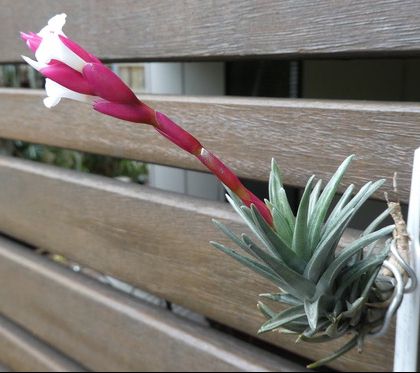
| Pam Butler 05/20 tenuifolia stiff leaf |
Bruce Dunstan 06/20 |
Pam Butler ... "The plant on the left was purchased as T. tenuifolia stiff leaf and the plant on the right as T. Dennis. They are similar."
Peter Tristram ... "They probably came off the same cliff! T. Dennis was imported as carminea, obviously not, then Derek decided to call them (there were a few clones) 'Carminea Dennis' even though carminea was not in the equation. It’s now T. Dennis, but which clone/s ? There would have been hundreds, even thousands, of these collected and distributed in the trade in the good old-rip-em-out-of-nature days.
Lovely, secund species too, somewhere in the tenuifolia/araujei complex. Trouble is we have no provenance."
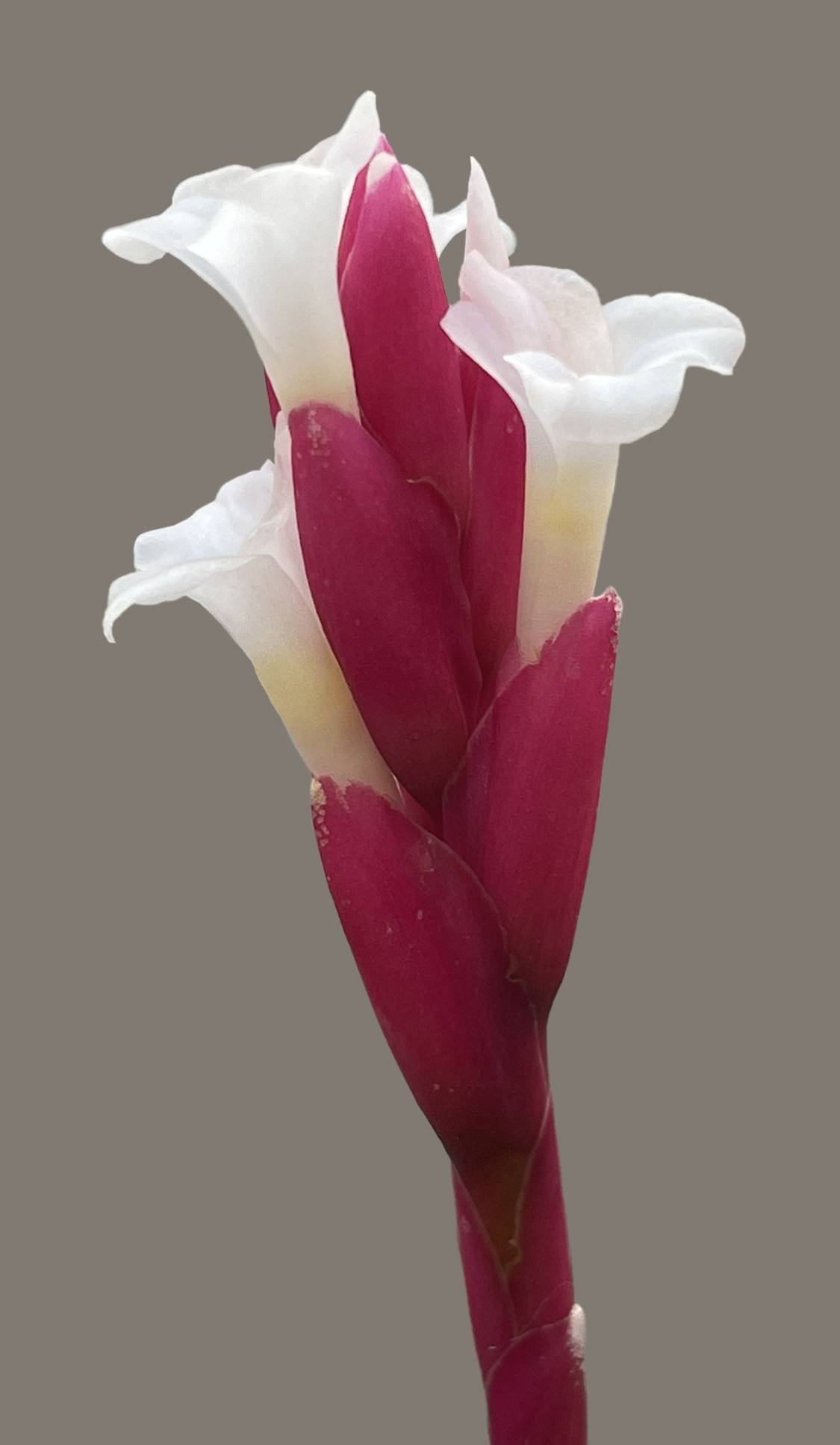
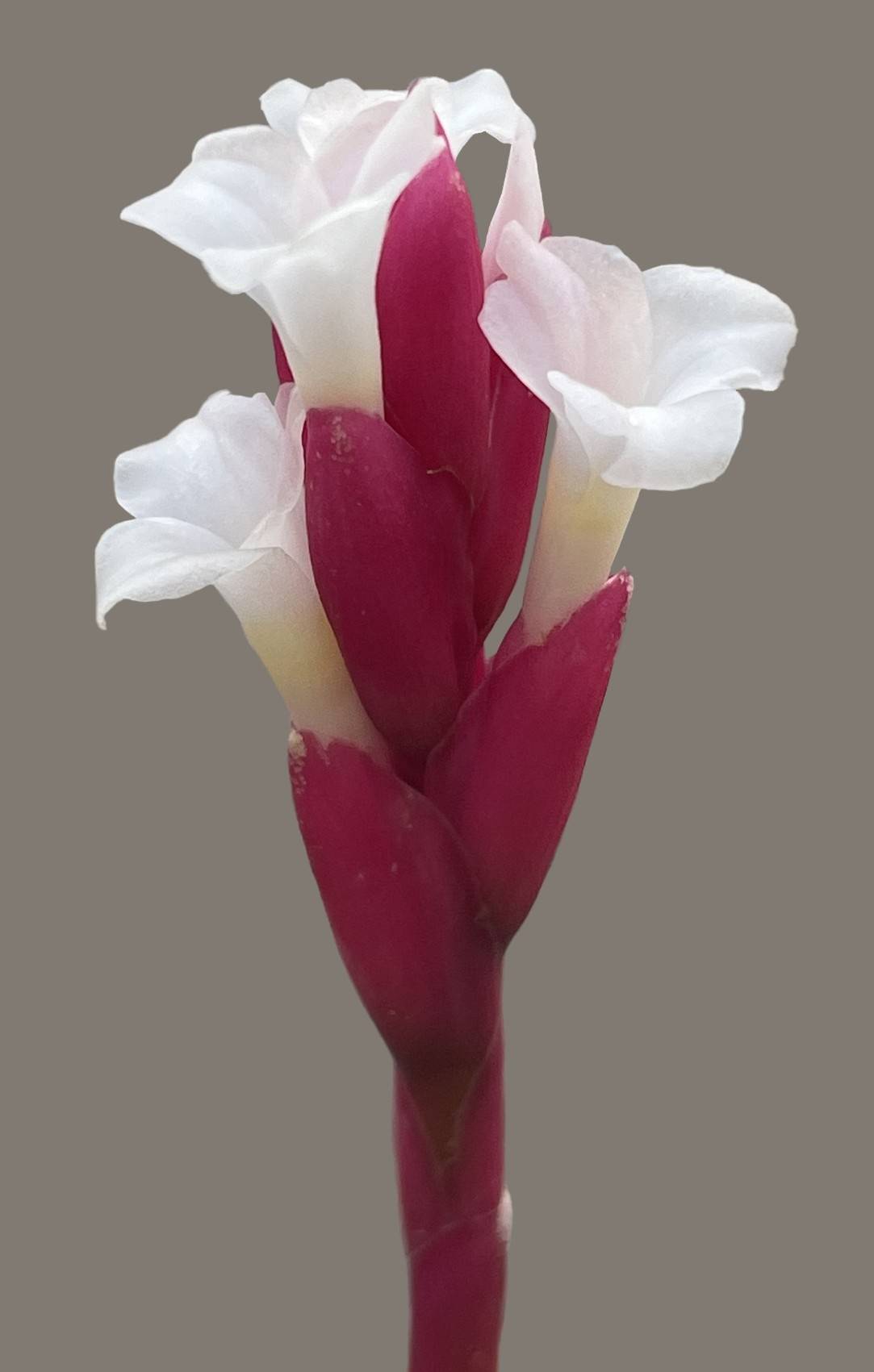



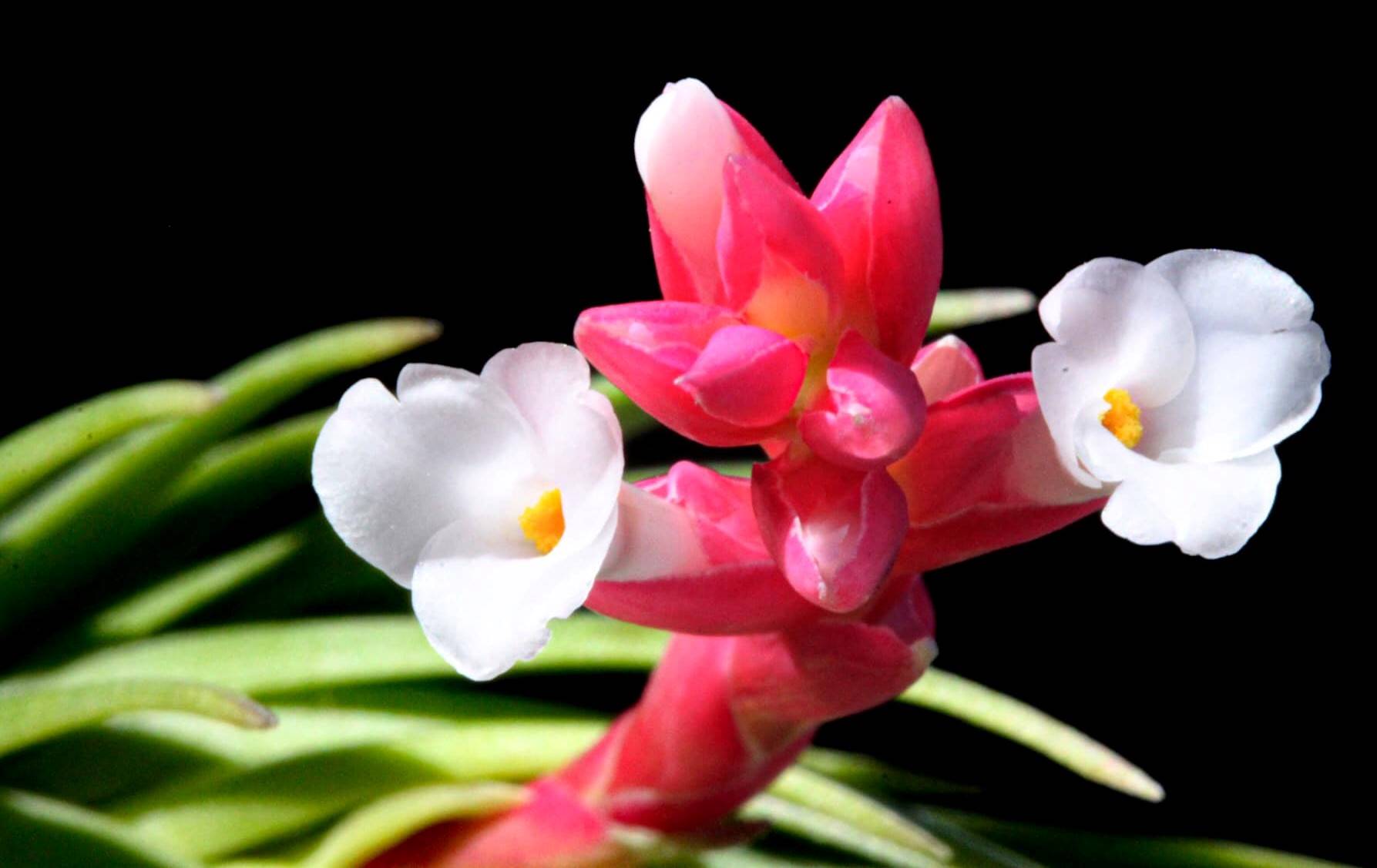
Updated 31/03/24






 - - -
- - - 






